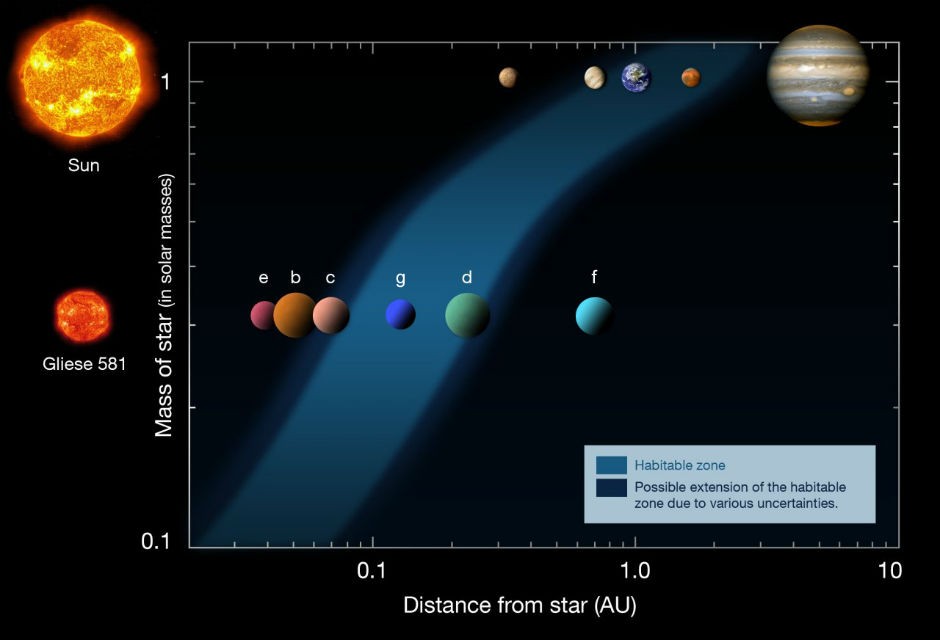Bakhtiar Ali Khan received his Bachelor's degree in electrical engineering from GIKI Pakistan, followed by a Master’s degree from Jacobs University Germany. He is currently pursuing a doctoral degree in the field of electromagnetics at Concordia. His research interest resides in antenna design for next-generation satellite and space applications. So far, he has published around 10 journal and conference articles.
Blog post
Are we alone? Part I

Looking up in the night sky, one finds millions of stars and galaxies drifting apart. Have you ever wondered how ginormous the universe actually is? Let me put things in perspective.
The distance between the sun and the earth is roughly 150 million kilometres. This distance is sometimes referred to as an astronomical unit (AU). We know from Einstein’s theory of special relativity that the fastest velocity that can be achieved is the speed of light, which is 300 million metres per second. Even at this velocity, light takes about eight minutes to get from the sun to the earth.
In other words, if the sun were to disappear, we would not know it for about eight minutes. Our home solar system is about 122 astronomical units in diameter. Our home galaxy — the Milky Way — is about 100,000 light years across. A light year is the distance light travels in a year's time, which corresponds to about 60,000 AU. The universe is about 93 billion light years across.
At this point, one might feel insignificant in the grand scheme of things.
What is outside the Observable Universe?
These 93 billion light years correspond to the diameter of the observable universe and are based on the fact that light from these incredibly distant places has not yet had enough time in the universe’s history to reach us. It may not even reach us at all, because some distant parts of space is moving away from us faster than the speed of light. This means that light from these regions of space will never get to us even after an infinite amount of time.
According to the theory of cosmic inflation proposed by Alan Guth in 1979, it is a real possibility that, as unbelievably enormous the observable universe might seem, it is a tiny slice of the entire universe. It is impossible to know what lies outside, however one can speculate.
Fermi Paradox
The universe is full of stars and planets and there are trillions of planets that can potentially support life as we know it. This implies that there has to be life evolving on some other planets besides Earth, right? But where is it? Why is it that we have not found any evidence of life elsewhere?
In an effort to answer these questions, consider this. Even if there is life in the outer universe and it is not in our direct galactic neighborhood, the so-called local group, it would be impossible to reach it due to the expansion of universe.
Let us rather restrict our attention to the Milky Way. It has roughly 400 billion stars, among which about 20-billion of them are sun-like stars.
According to a rough estimate, about a fifth of them have earth-like planets in their habitable zone. We commonly refer to the habitable zone of a star as the goldilocks zone, which is the area around a star that is neither too cold nor too warm but just right to sustain life as we know it.

As shown in the illustration, the goldilocks zone depends on the mass of the parent star. To see it clearly, consider a star that is a a tenth of the mass of the sun. As we can see in the illustration, for this star the goldilocks zone lies closer, while if the mass of the star is increased the goldilocks zone moves outwards.
If we take the conservative estimate that 0.1 per cent of these planets could harbor life. There would be about 1 million planets able to sustain life within the Milky Way alone. Furthermore, the Milky Way is about 13 billion years old and the earth is only about 4 billion years old, which implies that life would have had enough chances to emerge even before the earth was formed. So where is every one?
Acknowledgement: I would like to thank Karim Achouri for thought-provoking discussions.
About the author


